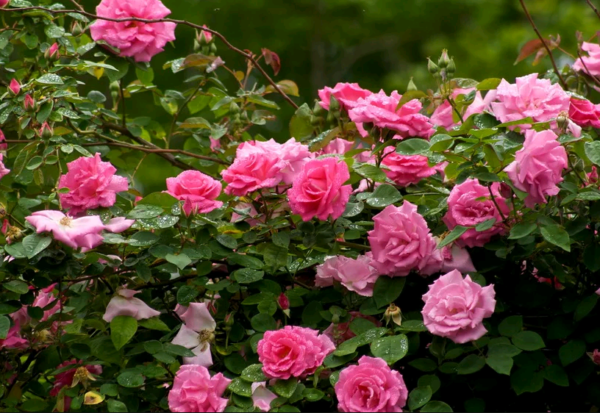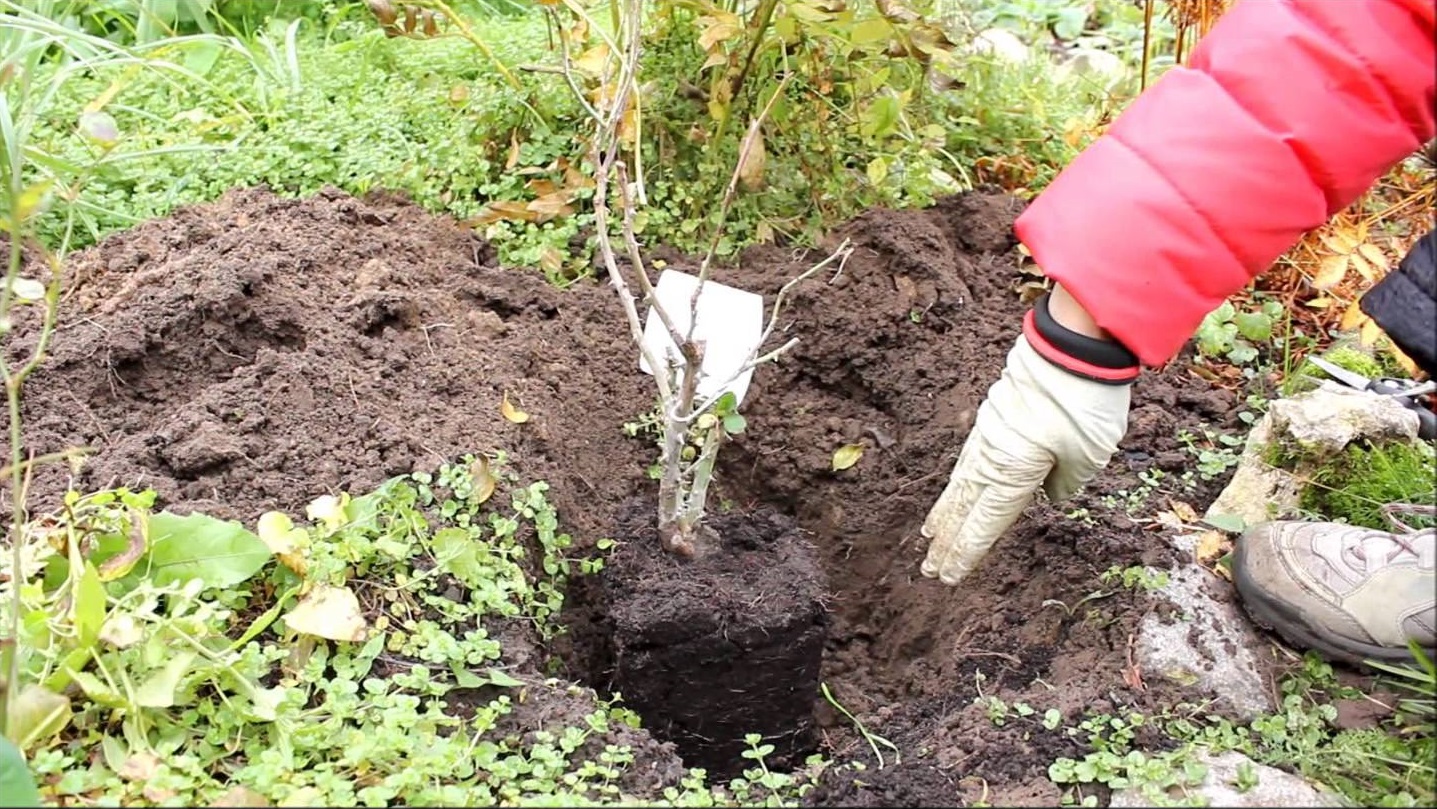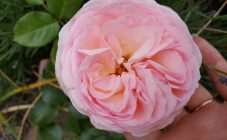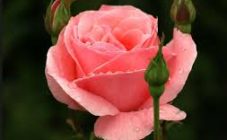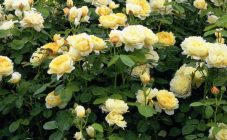Content:
Today, tea bush roses have become an integral part of many home gardens. They won such love of summer residents due to a variety of shades, an unsurpassed smell and relative frost resistance. Many people ask themselves the question "what color of a tea rose is this?" It is almost impossible to answer it because of the color variety of the plant. But the most popular are white and yellow.
Tea rose: general information
The Rosa odorata flower arrived on the European continent in the 19th century on the ships of the Osti India Company, engaged in the supply of tea. It is thanks to this that the tea rose got its present name.
The flower was really liked by the gardeners of Foggy Albion. They began to look after him and cross with local varieties. As a result of many years of work, many garden varieties have been obtained that can withstand European frosts. They began to be called "hybrid tea". But many species remained thermophilic, therefore they are not planted in open ground, growing in pots at home. In indoor conditions, the flower should grow stronger before planting in the garden.
Chemical composition and calorie content
If you look at the composition of nutrients in tea rose petals, you will notice that their energy value is close to 0 (5 kcal / 100 grams). But this is a real storehouse of vitamins and minerals. The bud contains:
- Of the vitamins, the bud contains B, C and K.
- Macro and trace elements - iodine, copper, potassium, calcium, iron, magnesium, selenium.
- The rose contains manganese, vanadium, zinc, phosphorus and silicon.
- Acids are represented by malic and citric.
- Also, petals contain resins, essential oils and a number of other useful components.
Useful properties of tea rose
Based on the unique set of useful components, it is possible to answer the question of why tea rose drinks are so popular:
- General strengthening of the immune system.
- Normalization of the digestive tract.
- An effective choleretic agent.
- Helps cope with insomnia.
- Jam made from tea rose petals will help with a number of colds and infectious diseases.
- Gargling with infusions of plant petals helps to heal stomatitis and pharyngitis.
- Used for cosmetic purposes to combat skin and hair problems.
- Tea rose helps to normalize the menstrual cycle in women and helps to remove excess fluid from the body.
The tea rose blooms very beautifully - this made it the queen of gardens, but its beneficial properties have become the reason for the true people's love for the plant.
Botanical characteristics
Today, many varieties of the flower have been bred from the wild Yue ji hua (as the tea rose is called in Chinese). Some of them are undersized and form bushes from 50 cm in height. Others are curly, with stems at least 2 meters. Most varieties have dark green oval leaves.
The buds of home tea rose bushes look unusually large against the background of leaves and stems. Their shape differs depending on the variety - from round to elongated with a pointed end. Briefly about the general characteristics of the classic tea rose:
- The length of the leaves, taking into account the root, is from 5 to 10 centimeters.
- The flower, depending on the variety, can be double, semi-double or simple.
- Pedicel - from 2 cm to 3 cm. The color of the petals is pink.
- The fruits are round, red in color.
The classic color is soft pink, but this is not a prerequisite, because breeders have bred many other varieties with a variety of colors. Also, depending on the hybrid, some characteristics may change.
Tea rose: white and yellow
These two plant colors are especially loved by gardeners. But, even choosing from just two colors, you can get confused, because there are a lot of varieties, and each of them has special characteristics:
- The snow-white flower Anastasia has flowers about 11 cm in size. It grows in a bush that reaches a height of about a meter. It is quite resistant to diseases and frosts, repeatedly flowering.
- Anna is also a bush plant up to a meter high. Having blossomed, the bud is up to 10 cm in diameter. It has a high yield and resistance to diseases.
- Tequila Sunrise is considered one of the best varieties of hybrid roses. It is a double-flowered plant with up to 40 petals. But their aroma is weak. Among the advantages is abundant flowering. The color of the roses is white with a pink border.
- The graceful yellow terry flower of extraordinary beauty Landora has up to 50 petals, the diameter of which reaches 10 centimeters. It is a hardy bush variety, suitable for cutting. The bush also reaches a height of about a meter.
- The lemon-yellow color of the Papillon variety also attracts many fans to the flower, the bud of which has a diameter of up to 11 cm. It has high winter hardiness, but is unsuitable for cutting.
In addition, varieties such as Texas Yellow, Sultan and Golden Dragon can be distinguished, which can change the shade of flowers from tangerine to pink.
Features of planting and plant care
Despite the rather difficult care of the tea rose, it is a favorite flower on the site for many gardeners. Below are the main aspects of planting and caring for this beautiful plant.
Choosing a place and landing dates
Of course, everything on the site should be harmonious, but you cannot plant a tea rose, based only on taste preferences. In order for it to delight the eye with beautiful flowers, you should choose a place protected from cold winds, but with enough light. Trees growing nearby will not be a hindrance.
It is best to plant in the autumn, but before the first frosts hit. So, a bush that has grown stronger before winter will be able to please the owner with flowers next summer. And it is not recommended to plant it in the spring - the shoots may die due to frost.
Preparing the soil for planting
Fertilized loam will be an ideal soil for a tea rose, especially if it is moderately acidified. It also needs good drainage. Dry clay, humus and sod should be added to the sandy soil so that it becomes at least a little like a suitable option in terms of characteristics. The corresponding recommendation is relevant both for planting in open ground and when planting in a pot.
With close groundwater, an elevation must be made before disembarking. Before planting, the site is dug into a depth of at least 30 centimeters, and then fertilized with compost and ash. One sq. m. a compost bucket and a glass of ash.
Disembarkation technique
The roots must be soaked in water 10 hours before planting.It is planted in a hole deep enough for the roots, at least 30 centimeters in diameter. Immediately before planting, the root system must be dipped into a solution prepared from a mixture of clay and manure diluted in water. This promotes quick acclimatization and better rooting. Having covered the roots, you need to fill in a mound that prevents the roots from exposing after the soil has shrunk. The planted bush must be watered and sprinkled abundantly.
Proper watering
Tea rose is a moisture-loving plant. This can only mean one thing - it should be watered regularly. In this case, you need to adhere to some rules:
- The water must be clean and free of lime.
- Watering is done once a week, but abundantly.
- Standing rainwater is ideal for irrigation.
- Mulching is carried out immediately after watering.
Fertilization and feeding rules
Not only the quality, but also the number of flowers depends on the correct fertilizing and timely fertilization. Some varieties do not bloom without these works.
The purchased complex fertilizers for this type of plant must contain magnesium, potassium and phosphorus. For the first feeding, nitrogen fertilizers are taken. For the second - potash. For the subsequent need containing organic and mineral substances. It is very important to fertilize the bushes during bud ovary and during flowering.
Correct pruning of the bush
Tea rose bushes are pruned 3 times a year - in spring, summer and autumn. The latter is an important stage in preparing for winter. The pruning that forms the appearance of the bush is carried out in the spring. And the summer one is preventive. Pruning is carried out 0.5 cm above the sprout, damaged and diseased branches are removed, as well as those that are less than one centimeter in diameter. A third of the total length is removed from large branches.
Diseases and pests
Despite some resistance to disease, tea rose bushes often suffer from pests. If preventive measures are taken untimely, they can get sick. The main enemies of the plant are:
- Powdery mildew. Its symptoms are white or gray dust deposits. Appears from lack of moisture. To fight, you need to use spraying with Raikom or Fundazol.
- Buds affected by gray rot will not bloom. The main symptom is decay and white bloom. To fight the disease, Euparen Multi is suitable.
- The root can be damaged by bacterial cancer. The cause of the disease is an excess of manure, dampness and root damage. Symptom - growths on the root collar. It is difficult to deal with it, for this the plant is dug up, the growths are cut off, treated with brilliant green and the root system is immersed in a solution of copper sulfate.
- Among insects, enemy number 1 is the bronze beetle, gnawing buds. You can only defeat them by manually collecting them.
Despite all the difficulties, the tea rose will be an excellent decoration of the site, which will give the owner good health. In addition, it can be used to prepare various dishes, so it is definitely worth planting.

